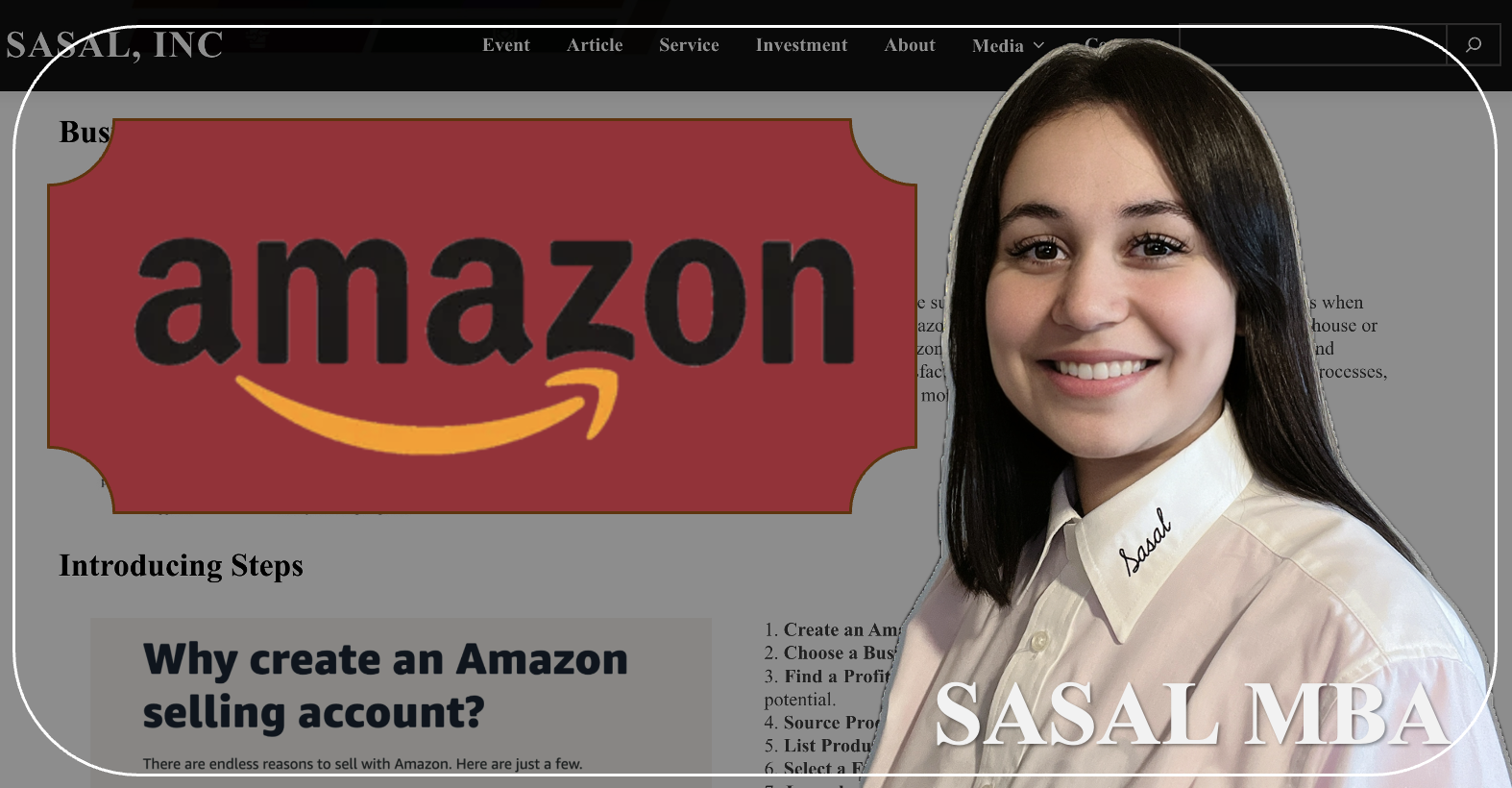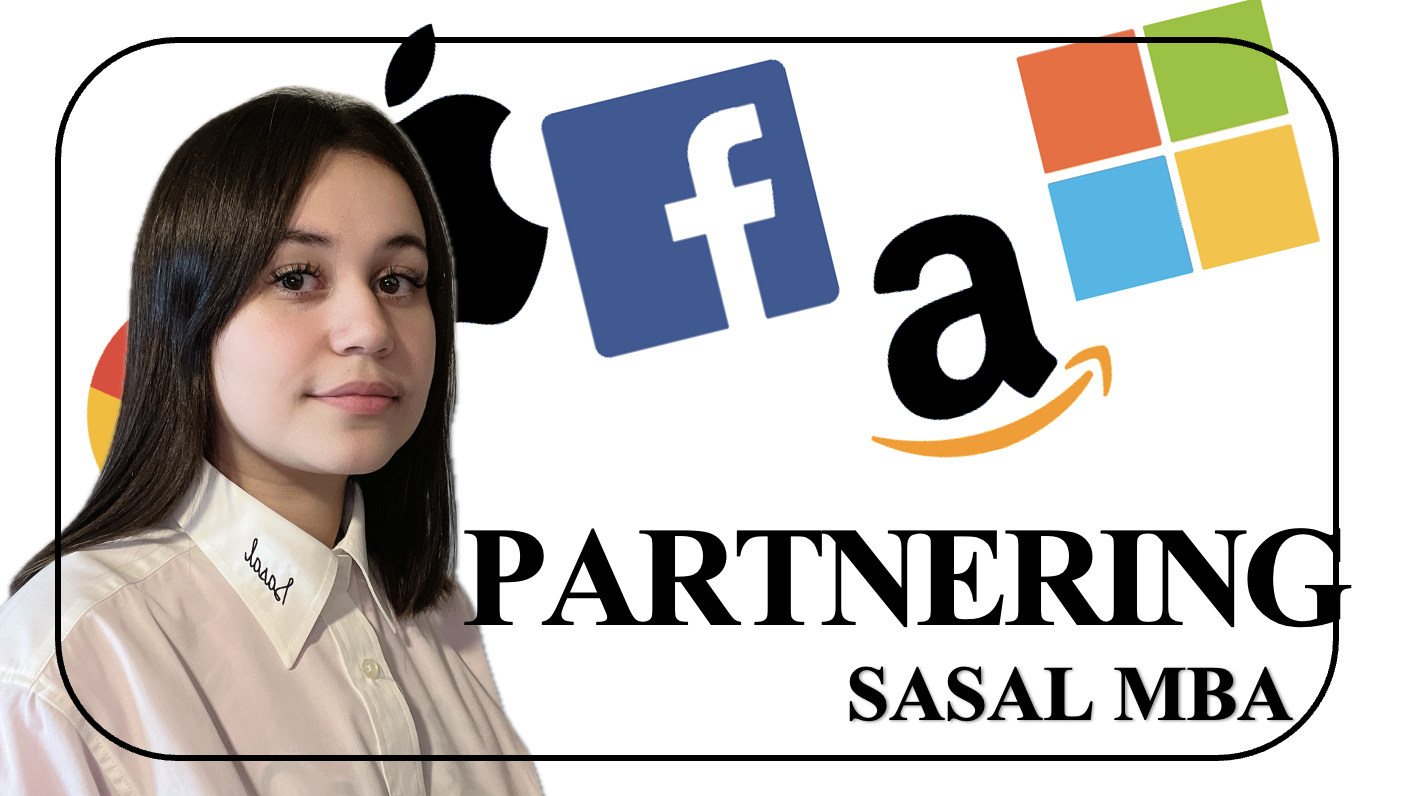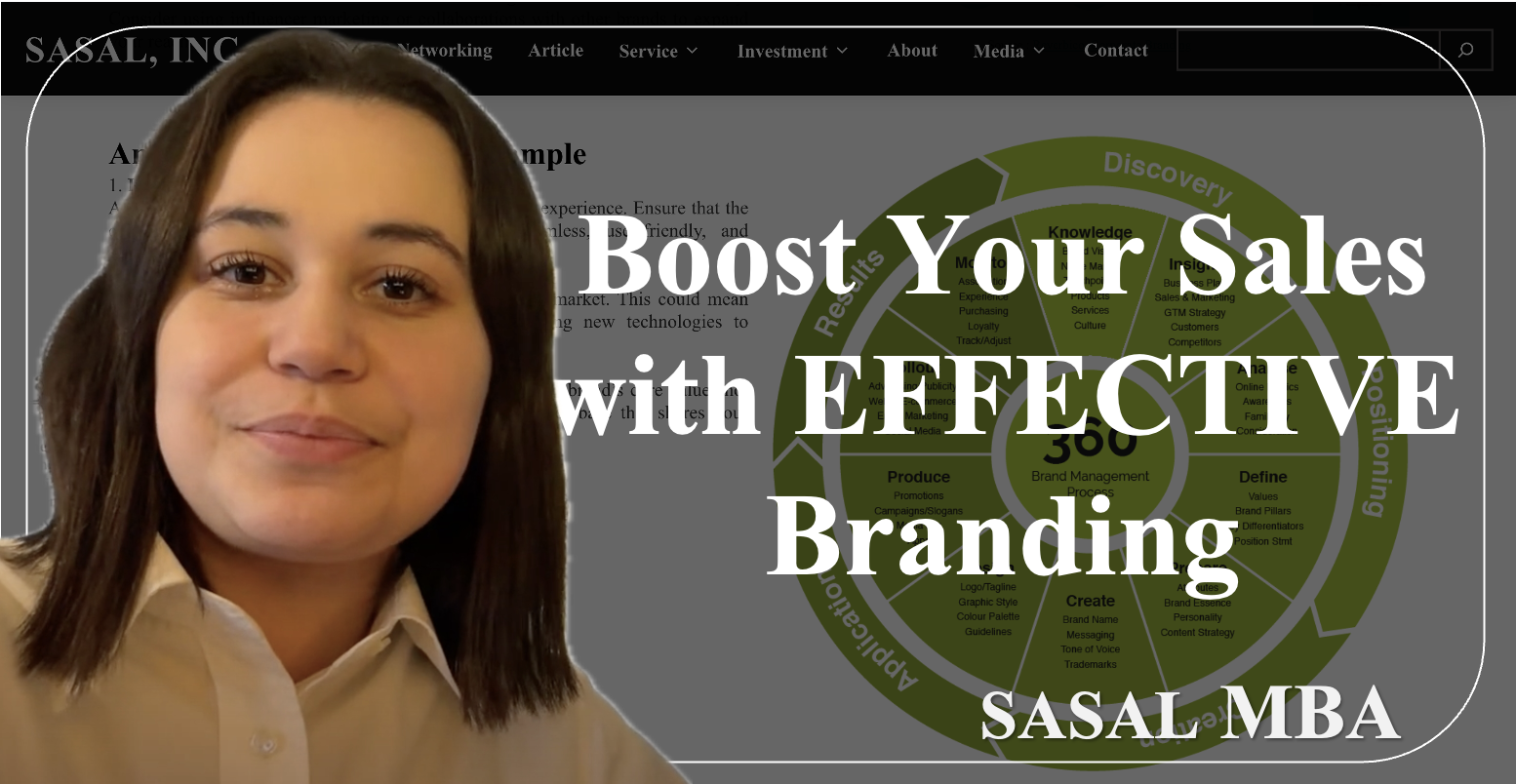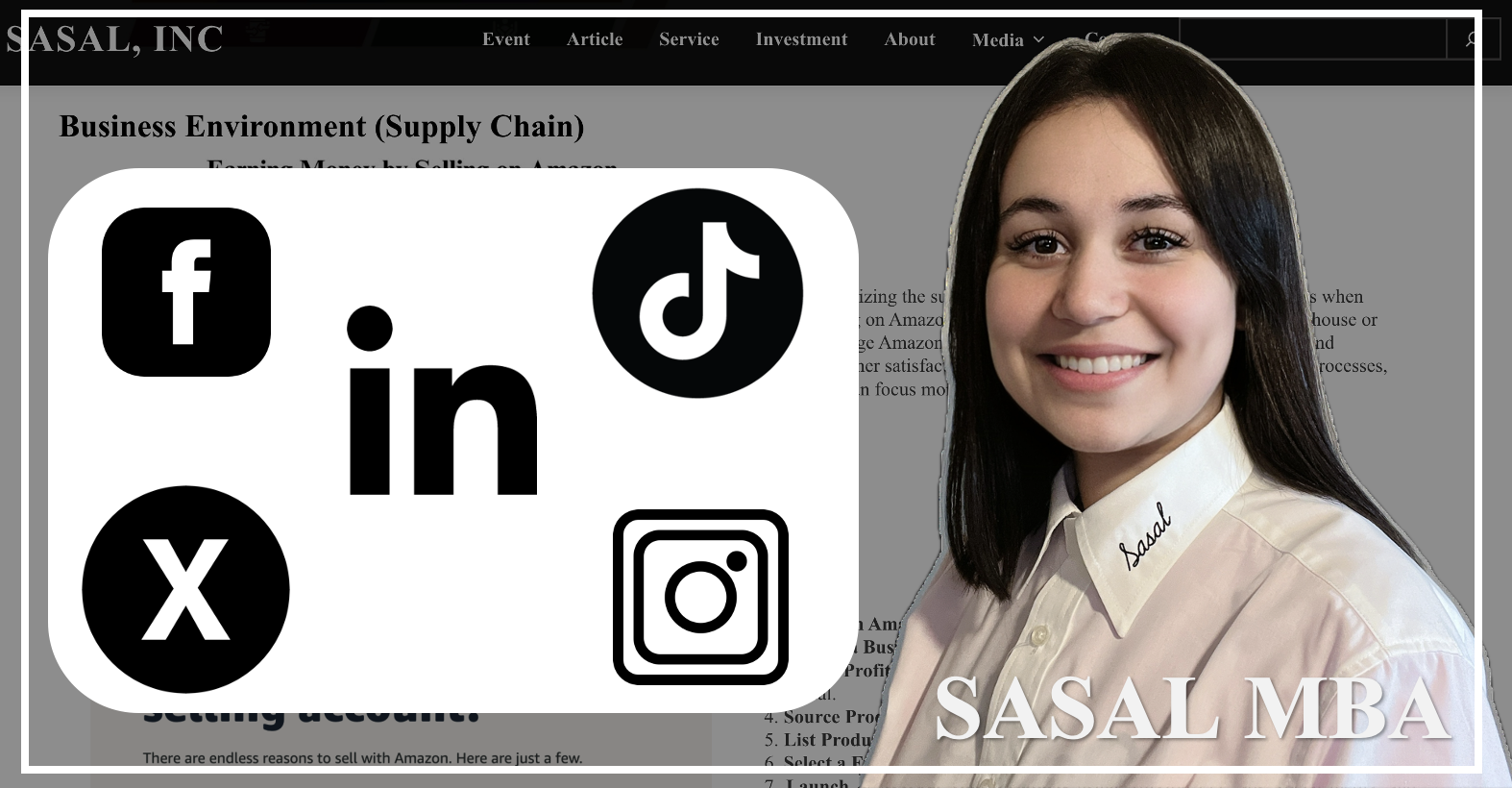SASAL, INC is sharing each page’s total pv for future clients. If possible, SASAL, INC would like to share much more data. However, according to Google’s current policy, there is no way to share data online. When you would like to get more data for your corporation, please think about making a contact with the counselor service. In that we are able to share much more data. Thank you.
Marketing Strategy
Marketing Strategy
What is a Marketing Strategy
A marketing strategy is a comprehensive plan formulated by a business to reach and persuade potential customers to buy its products or services. It involves identifying target markets, setting marketing goals, and determining the best ways to achieve those goals. A well-crafted marketing strategy aligns with the company’s overall business objectives and leverages various marketing channels to maximize reach and impact. It includes elements like market research, competitive analysis, and the marketing mix (product, price, place, promotion) to create a cohesive approach12.
Layer of Marketing Strategy
There are various types of marketing strategies that businesses can use to achieve their goals. These include market penetration (increasing market share in existing markets), market development (entering new markets), product development (creating new products for existing markets), and diversification (introducing new products to new markets). Each strategy has its own set of tactics and approaches, depending on the company’s objectives and market conditions511.
Business Marketing Strategy
This refers to the overall plan a business uses to market its products or services to other businesses (B2B). It involves understanding the needs and preferences of business customers, developing value propositions, and creating marketing campaigns that resonate with this audience. Key components include market segmentation, targeting, positioning, and the use of various marketing channels such as direct sales, digital marketing, and trade shows15.
Content Marketing Strategy
A content marketing strategy involves creating and distributing valuable, relevant, and consistent content to attract and engage a target audience. The goal is to drive profitable customer actions, such as generating leads or increasing sales. Key components include setting content goals, understanding the audience, choosing content types, and developing a content calendar. Effective content marketing strategies align with the overall business objectives and leverage various channels, such as blogs, social media, and email1213.
Content Plan: A content plan is a detailed outline of the content that will be created and published as part of a content marketing strategy. It includes information on content topics, formats, publication dates, and distribution channels. The content plan ensures that all content efforts are aligned with the overall marketing strategy and goals. It helps streamline the content creation process, maintain consistency, and measure the effectiveness of content marketing efforts1213.
Sample Marketing Plan: A sample marketing plan is a template or example that provides a framework for creating a marketing plan. It typically includes sections on market research, target audience, marketing goals, budget, timelines, and specific tactics. Sample marketing plans serve as a guide for businesses to develop their own plans, ensuring that all essential elements are covered. They can be customized to fit the specific needs and objectives of the company36.
- 15 marketing plan examples to inspire your work
- 3 Marketing Plan Examples To Inspire Your Business
- Free Marketing Plan Examples: Real-World Samples & Templates
Marketing Management PPT: A marketing management PowerPoint (PPT) is a presentation that outlines the key aspects of marketing management, including strategy, planning, implementation, and evaluation. It typically includes slides on market research, target audience, marketing goals, competitive analysis, and the marketing mix. The PPT format allows for a visual and concise presentation of marketing concepts, making it easier to communicate with stakeholders and team members.
Marketing Action Plan: A marketing action plan outlines the specific steps and activities that will be taken to implement a marketing strategy. It includes details on tasks, responsibilities, timelines, and resources needed. The action plan ensures that all marketing efforts are coordinated and aligned with the overall strategy. It helps track progress, measure success, and make adjustments as needed to achieve the desired outcomes36.
Competitive Market Analysis: This involves evaluating the strengths and weaknesses of competitors within the market. It includes analyzing competitors’ products, pricing, marketing strategies, and market positioning. The goal is to identify opportunities and threats, and to develop strategies to gain a competitive advantage. Competitive market analysis is essential for understanding the market landscape and making informed business decisions511.
Channel Strategy
A channel strategy outlines how a company will distribute its products or services to customers. It includes selecting the appropriate distribution channels, managing relationships with channel partners, and optimizing the supply chain. The goal is to ensure that products are available to customers in the most efficient and cost-effective manner. A well-defined channel strategy helps maximize reach and sales while minimizing costs511. Channel marketing involves promoting and selling products through various distribution channels, such as retailers, wholesalers, and online platforms. The goal is to reach a broader audience and increase sales by leveraging the strengths of different channels. Effective channel marketing strategies include selecting the right channels, developing strong relationships with channel partners, and providing support and incentives to drive sales511.
Marketing’s Types
Market Penetration Strategy
This strategy focuses on increasing market share within existing markets. It involves tactics such as lowering prices, increasing marketing efforts, and improving product quality. The goal is to attract more customers and increase sales without expanding into new markets. Market penetration strategies are often used in competitive markets where growth opportunities exist within the current customer base511.
Global Marketing Strategy
This involves planning and executing marketing activities on a global scale. It includes adapting marketing strategies to different cultural, economic, and regulatory environments. The goal is to achieve a consistent brand presence and maximize market opportunities worldwide. For example, a global marketing strategy might involve creating region-specific advertising campaigns and adjusting product features to meet local preferences.
Reverse Marketing
Reverse marketing is a strategy where customers seek out the company rather than the company actively pursuing customers. It involves creating a strong brand presence and reputation that attracts customers organically. Tactics include content marketing, social media engagement, and word-of-mouth referrals. The goal is to build trust and credibility, making customers more likely to choose the company’s products or services511.
Competitive Strategy
This refers to the approach a company takes to gain a competitive advantage in the market. It includes strategies such as cost leadership (offering lower prices), differentiation (offering unique products or services), and focus (targeting a specific market segment). Competitive strategies help businesses position themselves effectively against competitors and achieve long-term success511.
Expansion Strategy
An expansion strategy involves growing the company’s operations, products, or market presence. It includes tactics such as entering new markets, launching new products, and increasing production capacity. The goal is to achieve higher sales and market share. Expansion strategies require careful planning and execution to ensure that the company can manage the increased scale and complexity511. This goal focuses on capturing a larger portion of the market by attracting more customers and increasing sales. Tactics include improving product quality, lowering prices, increasing marketing efforts, and expanding distribution channels. Increasing market share helps businesses achieve economies of scale and strengthen their competitive position511.
Targeting Strategies
These involve selecting specific segments of the market to focus marketing efforts on. Targeting strategies include undifferentiated (mass marketing), differentiated (multiple segments), and concentrated (niche marketing). The goal is to tailor marketing messages and tactics to the needs and preferences of the target audience, increasing the effectiveness of marketing efforts511. Targeting and Positioning: Targeting involves selecting specific market segments to focus on, while positioning refers to how a company wants its products or services to be perceived by the target audience. Effective targeting and positioning strategies help businesses differentiate themselves from competitors and attract the right customers. For example, a luxury car brand might target high-income consumers and position its vehicles as symbols of status and quality. This approach ensures that marketing efforts resonate with the intended audience and build a strong brand identity.
Differentiation in Marketing
Differentiation involves creating a unique value proposition that sets a company’s products or services apart from competitors. This can be achieved through unique features, superior quality, exceptional service, or innovative design. The goal is to make the product more attractive to a specific target market. For instance, a smartphone company might differentiate its products by offering advanced camera technology and sleek design. Differentiation helps build brand loyalty and allows companies to command higher prices.
Diversification Marketing
This strategy involves expanding a company’s product line or entering new markets to reduce risk and increase growth opportunities. Diversification can be related (expanding into similar markets or products) or unrelated (entering entirely new industries). For example, a food company might diversify by introducing a line of health supplements. Diversification helps spread risk and can lead to new revenue streams, but it requires careful planning and resource allocation.
Turnaround Strategy
A turnaround strategy is implemented when a company is facing significant challenges, such as declining sales or financial difficulties. The goal is to reverse the negative trends and restore profitability. This can involve cost-cutting measures, restructuring, new leadership, or a shift in strategic focus. For example, a retailer might close underperforming stores and invest in e-commerce to revitalize its business. Turnaround strategies require decisive action and a clear plan to address the underlying issues.
Commercial Strategy
This encompasses the plans and actions a company takes to achieve its commercial objectives, such as increasing sales, market share, and profitability. It includes elements like pricing, distribution, sales tactics, and customer relationship management. A strong commercial strategy aligns with the overall business goals and leverages market opportunities to drive growth. For example, a company might implement a commercial strategy that focuses on expanding its distribution network and enhancing customer service.
GTM Strategy
A go-to-market (GTM) strategy outlines how a company will introduce its products or services to the market. It includes identifying the target audience, defining the value proposition, selecting distribution channels, and planning promotional activities. The GTM strategy ensures that all aspects of the product launch are coordinated and aligned with the company’s overall objectives. For example, a software company might develop a GTM strategy that focuses on targeting small businesses with a cloud-based solution.
Go-to-market (GTM) marketing involves the strategies and tactics used to launch a product or service into the market. It includes market research, target audience identification, positioning, and promotional activities. The goal is to ensure a successful product launch and achieve rapid market penetration. For example, a tech company might use a GTM strategy that includes a mix of online advertising, influencer partnerships, and product demos. Effective GTM marketing requires thorough planning and execution to create a strong market presence.
A go-to-market (GTM) plan is a detailed roadmap for launching a product or service. It includes specific actions, timelines, responsibilities, and resources needed to execute the GTM strategy. The plan ensures that all team members are aligned and that the launch activities are carried out efficiently. For example, a GTM plan for a new mobile app might include tasks such as developing marketing materials, setting up distribution channels, and scheduling promotional events.
Differentiation Strategy
This involves creating a unique value proposition that sets a company’s products or services apart from competitors. This can be achieved through unique features, superior quality, exceptional service, or innovative design. The goal is to make the product more attractive to a specific target market. For instance, a smartphone company might differentiate its products by offering advanced camera technology and sleek design. Differentiation helps build brand loyalty and allows companies to command higher prices.
Market Differentiation: This involves creating a unique value proposition that sets a company’s products or services apart from competitors. This can be achieved through unique features, superior quality, exceptional service, or innovative design. The goal is to make the product more attractive to a specific target market. For instance, a smartphone company might differentiate its products by offering advanced camera technology and sleek design. Differentiation helps build brand loyalty and allows companies to command higher prices.
Market Diversification: This strategy involves expanding a company’s product line or entering new markets to reduce risk and increase growth opportunities. Diversification can be related (expanding into similar markets or products) or unrelated (entering entirely new industries). For example, a food company might diversify by introducing a line of health supplements. Diversification helps spread risk and can lead to new revenue streams, but it requires careful planning and resource allocation.
Conflict Resolution Methods: These are techniques used to resolve disagreements and conflicts within an organization. Common methods include negotiation (finding a mutually acceptable solution), mediation (using a neutral third party to facilitate resolution), and collaborative problem-solving (working together to find a solution). Effective conflict resolution methods help maintain a positive work environment, improve team collaboration, and enhance productivity. For example, a company might use mediation to resolve a dispute between employees, ensuring that both parties feel heard and valued.
Competitive Advantage: This refers to the attributes that allow an organization to outperform its competitors. Competitive advantage can be achieved through cost leadership (offering lower prices), differentiation (offering unique products or services), or focusing on a niche market. Sustaining competitive advantage requires continuous innovation and adaptation to market changes. For instance, a company might invest in research and development to create innovative products that differentiate it from competitors, thereby attracting more customers and commanding higher prices.
International Marketing Strategy: This involves planning and executing marketing activities on a global scale. It includes adapting marketing strategies to different cultural, economic, and regulatory environments. The goal is to achieve a consistent brand presence and maximize market opportunities worldwide. For example, a global marketing strategy might involve creating region-specific advertising campaigns and adjusting product features to meet local preferences. Effective international marketing strategies require a deep understanding of diverse markets and the ability to navigate complex international dynamics.
The Ultimate Marketing Strategy: This concept refers to a highly effective and comprehensive marketing strategy that achieves exceptional results. It involves a deep understanding of the target audience, clear and measurable goals, innovative tactics, and seamless execution. The ultimate marketing strategy leverages data-driven insights, creative approaches, and integrated marketing channels to maximize impact. For example, a company might develop an ultimate marketing strategy that combines personalized digital marketing, influencer partnerships, and experiential events to create a powerful brand presence and drive significant sales growth.
Engagement Strategy
An engagement strategy focuses on building and maintaining strong relationships with customers, employees, and other stakeholders. It includes tactics such as personalized communication, interactive content, loyalty programs, and community-building activities. The goal is to foster long-term loyalty and advocacy. For example, a company might use an engagement strategy that includes regular social media interactions, exclusive offers for loyal customers, and events that bring the community together. Effective engagement strategies create meaningful connections and enhance brand loyalty.
Engagement Plan: An engagement plan outlines the specific actions and activities that will be used to implement an engagement strategy. It includes details on target audiences, communication channels, content types, and timelines. The plan ensures that all engagement efforts are coordinated and aligned with the overall strategy. For example, an engagement plan might include a schedule for social media posts, email newsletters, and customer surveys. A well-executed engagement plan helps build strong relationships and keeps the audience actively involved with the brand.
Apple Marketing Strategy: Apple’s marketing strategy is renowned for its focus on innovation, premium branding, and creating a strong emotional connection with customers. Key elements include sleek and minimalist product design, compelling storytelling, and a focus on user experience. Apple uses a mix of traditional and digital marketing channels, including high-profile product launches, targeted advertising, and a strong presence in retail stores. The company’s marketing strategy emphasizes the unique value and quality of its products, creating a loyal customer base and a powerful brand image.
Actual Marketing Way
Tactical Marketing
Tactical marketing involves the specific actions and tactics used to implement a marketing strategy. It includes activities such as advertising, promotions, social media campaigns, and public relations. Tactical marketing focuses on short-term goals and immediate results, supporting the overall marketing strategy. Effective tactical marketing requires careful planning, execution, and measurement to ensure that it aligns with the broader strategic objectives511.
Internal Marketing
Internal marketing involves promoting the company’s values, culture, and goals to its employees. The goal is to align and motivate employees to deliver a consistent and positive customer experience. Internal marketing activities include communication campaigns, training programs, and employee engagement initiatives. For example, a company might use internal marketing to ensure that all employees understand and support a new brand positioning.
Build Marketing Plan Steps
The steps in creating a marketing plan typically include conducting market research, defining target audiences, setting marketing goals, developing strategies and tactics, allocating budget, and measuring performance. Each step is crucial for creating a comprehensive and effective marketing plan. For example, market research helps identify customer needs and preferences, while setting goals provides direction and focus for marketing efforts.
What is a Marketing Strategy Plan
A marketing plan is a detailed document that outlines the specific actions a business will take to implement its marketing strategy. It includes information on target markets, marketing goals, budget, timelines, and the tactics to be used. The marketing plan serves as a roadmap for the marketing team, ensuring that all efforts are aligned and coordinated. It helps track progress, measure success, and make adjustments as needed to achieve the desired outcomes34. A marketing strategy plan outlines the long-term approach a business will take to achieve its marketing goals. It includes the overall vision, mission, and objectives, as well as the specific strategies and tactics to be employed. This plan serves as a guide for all marketing activities, ensuring that they are aligned with the company’s broader business goals. It typically covers areas such as market research, competitive analysis, and the marketing mix13.
Marketing Strategy in Business Plan: This section of a business plan details how the company intends to attract and retain customers. It includes an analysis of the target market, competitive landscape, and marketing objectives. The marketing strategy in a business plan outlines the specific tactics and channels that will be used to reach potential customers and achieve business goals. It is essential for securing funding and guiding the company’s marketing efforts23.
Marketing Plan in Business Plan: This component of a business plan provides a detailed outline of the marketing activities the company will undertake. It includes information on target markets, marketing goals, budget, timelines, and the specific tactics to be used. The marketing plan in a business plan ensures that all marketing efforts are aligned with the company’s overall strategy and objectives. It helps track progress, measure success, and make adjustments as needed36.
How to set Marketing Goals
Marketing goals are specific, measurable objectives that a company aims to achieve through its marketing efforts. They provide direction and focus for the marketing team and help track progress, and measure success. Common marketing goals include increasing brand awareness, generating leads, boosting sales, and improving customer engagement. Setting clear and achievable marketing goals is essential for developing effective marketing strategies and plans910.
How to share Marketing Strategy with PPT
A marketing strategy PowerPoint (PPT) is a presentation that outlines a company’s marketing strategy. It typically includes slides on market research, target audience, marketing goals, competitive analysis, and the marketing mix. The PPT format allows for a visual and concise presentation of the strategy, making it easier to communicate with stakeholders and team members. It is often used in meetings, pitches, and training sessions78.
Strategic Marketing Process
This process involves the systematic planning, implementation, and evaluation of marketing activities to achieve business objectives. It includes steps such as market analysis, strategy formulation, tactical planning, and performance measurement. The strategic marketing process ensures that marketing efforts are aligned with the company’s overall strategy and that resources are used effectively. For example, a company might use this process to develop a marketing campaign that targets a new customer segment.
Marketing Approach
This refers to the overall method or philosophy a company uses to market its products or services. Common approaches include product-oriented (focusing on product quality and innovation), market-oriented (focusing on customer needs and preferences), and sales-oriented (focusing on sales techniques and promotions). The chosen marketing approach influences the company’s marketing strategies and tactics. For example, a market-oriented approach might involve extensive market research and customer feedback to guide product development.
Marketing Planning Process
This involves the steps taken to develop a marketing plan, including situation analysis, setting objectives, developing strategies, implementing tactics, and monitoring results. The marketing planning process ensures that all marketing activities are well-coordinated and aligned with the company’s goals. For example, a company might conduct a SWOT analysis to identify strengths, weaknesses, opportunities, and threats before setting marketing objectives.
Market Analysis in Business Plan
This section of a business plan provides an in-depth analysis of the market in which the company operates. It includes information on market size, growth trends, customer demographics, and competitive landscape. Market analysis helps identify opportunities and threats and informs the development of marketing strategies. For example, a startup might use market analysis to identify a niche market with high growth potential.
Strategic Marketing Management: This involves the planning, implementation, and control of marketing strategies to achieve business objectives. It includes analyzing market opportunities, developing marketing strategies, and monitoring performance. Strategic marketing management ensures that marketing efforts are aligned with the company’s overall strategy and that resources are used effectively. For example, a company might use strategic marketing management to launch a new product and capture market share.
Different Marketing Strategies: Businesses can use various marketing strategies to achieve their goals, including digital marketing, content marketing, influencer marketing, and experiential marketing. Each strategy has its own set of tactics and approaches, depending on the company’s objectives and target audience. For example, digital marketing might involve using social media, email, and search engine optimization to reach customers online.
Market Expansion Strategy: This strategy involves growing the company’s market presence by entering new geographic areas or customer segments. It includes tactics such as opening new locations, forming partnerships, and adapting products to meet local needs. The goal is to increase sales and market share. For example, a retail chain might use a market expansion strategy to open stores in new cities or countries.
Target Marketing Strategies: These involve selecting specific segments of the market to focus marketing efforts on. Target marketing strategies include undifferentiated (mass marketing), differentiated (multiple segments), and concentrated (niche marketing). The goal is to tailor marketing messages and tactics to the needs and preferences of the target audience, increasing the effectiveness of marketing efforts. For example, a company might use a differentiated strategy to create separate marketing campaigns for different customer segments.
Market Development Strategy: This strategy focuses on entering new markets to grow the business. It involves identifying new geographic areas, customer segments, or product uses. The goal is to increase sales and market share by reaching new customers. For example, a company might use a market development strategy to expand its product line into international markets.
Strategic Decision Making: This involves making decisions that have long-term implications for the company. It includes evaluating options, assessing risks, and choosing the best course of action to achieve strategic objectives. Strategic decision making requires careful analysis and consideration of both internal and external factors. For example, a company might make a strategic decision to invest in new technology to gain a competitive advantage.
Effective Marketing: This refers to marketing efforts that achieve the desired outcomes, such as increased sales, brand awareness, or customer engagement. Effective marketing requires a clear understanding of the target audience, well-defined goals, and the use of appropriate strategies and tactics. It also involves measuring performance and making adjustments as needed. For example, an effective marketing campaign might use targeted advertising and personalized messaging to drive conversions.
Creative Strategy: This involves developing innovative and compelling marketing messages and campaigns that capture the attention of the target audience. A creative strategy includes defining the brand voice, crafting key messages, and designing visuals that resonate with customers. The goal is to create memorable and impactful marketing that stands out in a crowded marketplace. For example, a creative strategy might involve using storytelling and emotional appeals to connect with customers.
How to Set the Promotion Plan
A promotion plan outlines the specific promotional activities that will be used to market a product or service. It includes details on advertising, sales promotions, public relations, and personal selling. The promotion plan ensures that all promotional efforts are coordinated and aligned with the overall marketing strategy. For example, a promotion plan might include a mix of online ads, in-store promotions, and influencer partnerships.
Campaign Strategy
A campaign strategy is a comprehensive plan that outlines how a marketing campaign will achieve its objectives. It includes defining the target audience, setting goals, crafting key messages, selecting channels, and determining the budget and timeline. The strategy ensures that all campaign elements are aligned and work together to achieve the desired outcomes. For example, a campaign strategy for a new product launch might focus on generating buzz through social media, influencer partnerships, and targeted advertising.
Marketing Communication Plan: This plan outlines how a company will communicate with its target audience to promote its products or services. It includes details on messaging, channels, timing, and frequency of communication. The goal is to ensure consistent and effective communication that resonates with the audience and supports the overall marketing strategy. For example, a marketing communication plan might include a mix of email newsletters, social media posts, press releases, and events.
Campaign Planning
This involves developing a detailed plan for a marketing campaign, including objectives, target audience, messaging, budget, and timelines. Campaign planning ensures that all elements of the campaign are well-coordinated and executed effectively. It also includes setting key performance indicators (KPIs) to measure success. For example, a campaign plan for a product launch might include social media ads, email marketing, and a launch event.
An advertising plan outlines the specific strategies and tactics a company will use to promote its products or services through paid media channels. It includes details on target audience, messaging, budget, media selection, and scheduling. The goal is to create effective advertisements that reach the right audience and drive desired actions, such as purchases or brand awareness. For example, an advertising plan might include a mix of TV commercials, online ads, and print advertisements, each tailored to different segments of the target market.
Social Marketing Concept
This concept involves using marketing principles to influence behaviors that benefit individuals and communities for the greater social good. It focuses on creating campaigns that promote positive social change, such as public health initiatives, environmental conservation, or social justice causes. Social marketing campaigns often use persuasive communication and incentives to encourage behavior change. For example, a social marketing campaign might aim to reduce smoking rates by highlighting the health risks and providing resources for quitting.
Platform Strategy: A platform strategy involves creating a business model that connects multiple groups, such as consumers and producers, through a common platform. This strategy leverages network effects, where the value of the platform increases as more users join. Examples include online marketplaces, social media platforms, and software ecosystems. A successful platform strategy requires building a strong user base, ensuring seamless interactions, and continuously innovating to meet user needs.
Market Entry: Market entry refers to the strategy and actions a company takes to enter a new market. It includes selecting the target market, assessing market conditions, and determining the best entry mode, such as exporting, licensing, joint ventures, or direct investment. The goal is to establish a presence in the new market and achieve growth. For example, a company might enter a foreign market by partnering with a local distributor to leverage their market knowledge and network.
Positioning in Marketing: Positioning involves creating a distinct image and identity for a product or brand in the minds of the target audience. It differentiates the product from competitors and highlights its unique value proposition. Effective positioning requires understanding customer needs, competitive landscape, and the product’s strengths. For example, a luxury car brand might position itself as a symbol of status and quality, appealing to affluent consumers who value prestige and performance.
Market Segmentation Targeting and Positioning: This process involves dividing the market into distinct segments based on characteristics such as demographics, psychographics, and behavior (segmentation), selecting the most attractive segments to focus on (targeting), and creating a unique image for the product in the minds of the target audience (positioning). This approach ensures that marketing efforts are tailored to the specific needs and preferences of different customer groups, increasing their effectiveness.
Marketing Strategy Development: This involves creating a comprehensive plan to achieve marketing goals. It includes conducting market research, analyzing the competitive landscape, defining target audiences, setting objectives, and developing strategies and tactics. The goal is to create a cohesive and effective marketing approach that aligns with the company’s overall business objectives. For example, a company might develop a marketing strategy that focuses on digital marketing and content creation to reach tech-savvy consumers.
Marketing Models: Marketing models are frameworks and tools used to analyze and plan marketing activities. Common models include the SWOT analysis (strengths, weaknesses, opportunities, threats), the 4Ps (product, price, place, promotion), and the AIDA model (attention, interest, desire, action). These models help marketers understand the market environment, develop strategies, and evaluate performance. For example, a company might use the 4Ps model to plan a new product launch.
Brand Mission: A brand mission is a statement that defines the purpose and values of a brand. It communicates what the brand stands for and what it aims to achieve. The brand mission guides all marketing and business activities, ensuring consistency and alignment with the brand’s identity. For example, a brand mission for an eco-friendly company might focus on sustainability and reducing environmental impact.
Holistic Marketing: This approach considers the entire business and all its stakeholders in the marketing process. It integrates internal marketing, integrated marketing, relationship marketing, and socially responsible marketing to create a cohesive and comprehensive marketing strategy. The goal is to ensure that all marketing activities are aligned and support the overall business objectives. For example, a holistic marketing approach might involve coordinating marketing efforts across different departments and channels to create a seamless customer experience.
Marketing Implementation: This involves putting the marketing plan into action. It includes executing marketing tactics, managing resources, and monitoring progress. Effective marketing implementation requires clear communication, coordination, and flexibility to adapt to changing conditions. For example, a company might implement a marketing campaign by launching ads, hosting events, and engaging with customers on social media.
Market Penetration: This strategy focuses on increasing market share within existing markets. It involves tactics such as lowering prices, increasing marketing efforts, and improving product quality. The goal is to attract more customers and increase sales without expanding into new markets. Market penetration strategies are often used in competitive markets where growth opportunities exist within the current customer base.
Market Positioning Strategy: This involves creating a distinct image and identity for a product or brand in the minds of the target audience. It differentiates the product from competitors and highlights its unique value proposition. Effective positioning requires understanding customer needs, competitive landscape, and the product’s strengths. For example, a luxury car brand might position itself as a symbol of status and quality, appealing to affluent consumers who value prestige and performance.
Market Expansion: This strategy involves growing the company’s market presence by entering new geographic areas or customer segments. It includes tactics such as opening new locations, forming partnerships, and adapting products to meet local needs. The goal is to increase sales and market share. For example, a retail chain might use a market expansion strategy to open stores in new cities or countries.
Product Market Expansion Grid: Also known as the Ansoff Matrix, this tool helps businesses identify growth opportunities by considering new and existing products and markets. The grid includes four strategies: market penetration (existing products, existing markets), market development (existing products, new markets), product development (new products, existing markets), and diversification (new products, new markets). For example, a company might use the grid to decide whether to introduce a new product line or enter a new geographic market.
Concept of Strategy: Strategy involves setting goals, determining actions to achieve those goals, and mobilizing resources to execute the actions. It describes how the ends (goals) will be achieved by the means (resources). Effective strategy requires a clear understanding of the competitive environment and the internal capabilities of the organization. For example, a company might develop a strategy to become the market leader by focusing on innovation and customer service.
SASAL, INC’s Supports Process
| No | Type | Title | Contents | Term | Cost |
|---|---|---|---|---|---|
| 1 | Strategy | Basic Marketing Information Share | ・Based on SASAL, INC’s HP, SASAL shares the information of Strategy. | 2month | $60,000 |
| 2 | Marketing Strategy Negotiation | ・Based on the client’s situation, SASAL customizes the strategy for your corporation. ・SASAL, INC makes a longlist for business alliances. |
3month | $90,000 | |
| 3 | Operation | Alliance Process | ・Based on the longlist, SASAL, INC approaches the corporations. | 2month | $60,000 |
| 4 | Marketing On Progress | ・In this process, clients need to consider additional fees depending on the intent. | 2month | $60,000 | |
| 5 | Analysis | ・Based on marketing Strategy, SASAL, INC share the analysis. | 2month | $60,000 | |
| Total | 11 month | $330,000 |
When you would like to start from a small budget, SASAL INC is able to support by counselor service. Please feel free to contact us. Thank you.
Articles
Who publish the world data as a government organization?
What kinds of search engine in the world
What is the Sector?
No post found
Corporate Strategy Planning
What is the strategy: Strategy involves setting goals, determining actions to achieve those goals, and mobilizing resources to execute the actions. It describes how the ends (goals) will be achieved by the means (resources). For example, a company might set a goal to become the market leader in its industry and develop a strategy that includes expanding its product line, improving customer service, and increasing marketing efforts. Effective strategy requires a clear understanding of the competitive environment and the internal capabilities of the organization.
Strategy: This is a plan of action designed to achieve a long-term or overall aim. It involves making decisions about how to allocate resources to achieve the desired outcomes. For instance, a business strategy might focus on entering new markets, developing new products, or improving operational efficiency. Strategy is essential for guiding an organization towards its goals and ensuring that all efforts are aligned with the overall vision. It requires continuous assessment and adaptation to changing circumstances.
Good Strategy Bad Strategy: This concept, popularized by Richard Rumelt, distinguishes between effective strategies (good) and ineffective ones (bad). Good strategies involve clear, coherent actions to overcome obstacles, while bad strategies are often vague, filled with buzzwords, and lack actionable steps. For example, a good strategy might include specific initiatives to improve product quality, while a bad strategy might simply state “become the best” without detailing how to achieve that. Good strategies are grounded in a deep understanding of the challenges and opportunities facing the organization.
Grand Strategies: These are comprehensive, long-term plans that provide a high-level framework for achieving major objectives. Common grand strategies include growth (expanding the company’s operations), stability (maintaining current operations), retrenchment (reducing operations to cut costs), and combination strategies (using a mix of the other strategies). For example, a company might pursue a growth strategy by acquiring other businesses or entering new markets. Grand strategies help organizations navigate complex environments and make significant, overarching decisions.
Internal Communications Strategy: This is a plan for how information will be shared within an organization. It ensures that all employees are informed, aligned, and motivated towards the organization’s goals. For example, an internal communications strategy might include regular newsletters, team meetings, and an intranet portal for sharing updates and resources. Effective internal communication fosters a positive organizational culture, enhances collaboration, and ensures that everyone is working towards the same objectives.
Communication Plan: A communication plan outlines how information will be exchanged among project team members and stakeholders. It details the methods, frequency, and channels for communication to ensure everyone is informed and aligned. For instance, a project communication plan might specify weekly status meetings, email updates, and a shared project management tool. A well-crafted communication plan helps prevent misunderstandings, keeps everyone on the same page, and facilitates smooth project execution.
Types of the Strategy: Strategies can be categorized into various types, such as corporate strategy (overall direction of the company), business strategy (how to compete in a specific market), and functional strategy (specific actions within departments like marketing or finance). Each type focuses on different levels of the organization and aspects of competition. Corporate strategy sets the broad direction, business strategy focuses on competitive positioning, and functional strategy deals with specific operational areas.
Combination Strategy: This involves using multiple strategies simultaneously to achieve objectives. It can include a mix of stability, expansion, and retrenchment strategies to address different areas of the business. For example, a company might stabilize its core operations while expanding into new markets and cutting costs in underperforming areas. Combination strategies allow organizations to be flexible and responsive to different challenges and opportunities.
Concentration Strategy: This strategy focuses on growing within a single industry or market. It can involve market penetration (increasing market share in existing markets), market development (entering new markets), or product development (introducing new products). For example, a company might focus on increasing its market share by offering promotions and improving product quality. Concentration strategies help organizations build deep expertise and strong positions within their chosen markets.
Deliberate Strategy: A deliberate strategy is a planned, intentional approach to achieving specific goals. It involves careful analysis and long-term planning, often used by established businesses. For instance, a company might develop a deliberate strategy to enter a new market by conducting market research, developing a marketing plan, and setting specific sales targets. Deliberate strategies are characterized by clear objectives, detailed plans, and systematic execution.
Generic Strategies: These are basic types of strategies that businesses can use to gain competitive advantage. Michael Porter identified three generic strategies: cost leadership (offering lower prices), differentiation (offering unique products or services), and focus (targeting a specific market segment). For example, a company might use a cost leadership strategy to become the lowest-cost producer in its industry. Generic strategies provide a framework for businesses to position themselves in the market and compete effectively.
Generic Competitive Strategies: These are strategies that businesses use to compete in the market. They include cost leadership, differentiation, and focus strategies, which can be applied broadly or to specific market segments. For instance, a company might use a differentiation strategy to offer unique products that stand out from competitors. Competitive strategies help businesses identify their strengths and leverage them to gain an edge over rivals.
Hybrid Strategy: This strategy combines elements of cost leadership and differentiation to provide unique value at a lower cost. It aims to offer a mix of high quality and low price. For example, a company might use advanced manufacturing techniques to produce high-quality products at a lower cost. Hybrid strategies allow businesses to appeal to a broader range of customers by offering both value and uniqueness.
Niche Strategy: Also known as a focus strategy, this involves targeting a specific, well-defined segment of the market. Businesses using this strategy tailor their products or services to meet the unique needs of that segment. For instance, a company might focus on producing high-end, custom-made products for a luxury market. Niche strategies enable businesses to serve specialized markets effectively and build strong customer loyalty.
Offensive Strategy: This involves taking proactive actions to gain competitive advantage, such as aggressive marketing, innovation, or strategic alliances. The goal is to outperform competitors and capture market share. For example, a company might launch a new product line to attract customers from competitors. Offensive strategies are characterized by bold moves and a focus on growth and market dominance.
Strategic Drift: This occurs when a company’s strategy gradually becomes less relevant due to changes in the external environment. It can lead to a misalignment between the company’s actions and market demands. For instance, a company might experience strategic drift if it fails to adapt to new technologies or changing customer preferences. Addressing strategic drift requires continuous monitoring of the environment and a willingness to adjust strategies as needed.
Strategic Resources: These are assets that provide a company with a competitive advantage. They can include tangible resources like capital and equipment, as well as intangible resources like brand reputation and intellectual property. For example, a company might leverage its strong brand reputation to attract customers and command premium prices. Strategic resources are critical for sustaining competitive advantage and driving long-term success.
Stability Strategy: This strategy focuses on maintaining the current status and performance of the business. It involves making incremental improvements rather than pursuing significant growth or change. For instance, a company might use a stability strategy to maintain its market position while improving operational efficiency. Stability strategies are often used in mature industries where growth opportunities are limited.
Org Design: Organizational design involves structuring a company’s roles, responsibilities, and processes to achieve its strategic goals. It includes defining the hierarchy, communication channels, and workflow. For example, a company might redesign its organizational structure to improve collaboration and decision-making. Effective organizational design ensures that the company operates efficiently and can adapt to changes in the environment.
Location Strategy: This involves choosing the optimal locations for a company’s operations to maximize efficiency and customer reach. Factors include proximity to suppliers, customers, and skilled labor. For instance, a company might choose to locate its manufacturing facilities near key suppliers to reduce transportation costs. Location strategy is critical for optimizing logistics, reducing costs, and improving service delivery.
Idea Generation Techniques: These are methods used to generate new ideas and solutions. Techniques include brainstorming (generating ideas in a group setting), mind mapping (visualizing ideas and their connections), and the Delphi method (gathering expert opinions). For example, a company might use brainstorming sessions to develop new product ideas. Effective idea generation techniques foster creativity and innovation within the organization.
Learning and Development Strategy: This strategy focuses on enhancing employees’ skills and knowledge to improve performance and achieve organizational goals. It includes training programs, workshops, and continuous learning initiatives. For instance, a company might implement a learning and development strategy to upskill its workforce and stay competitive. Investing in learning and development helps organizations build a capable and adaptable workforce.
Research Strategy: This involves planning and conducting research to gather information and insights that inform business decisions. It includes defining research objectives, methods, and data analysis. For example, a company might use a research strategy to understand customer preferences and develop new products. A well-defined research strategy ensures that decisions are based on accurate and relevant data.
Strategy Analysis: This involves evaluating a company’s internal and external environment to identify strengths, weaknesses, opportunities, and threats (SWOT). It helps in formulating effective strategies. For instance, a company might conduct a SWOT analysis to identify areas for improvement and growth opportunities. Strategy analysis provides a foundation for making informed strategic decisions.
Corporate Strategy Planning: This involves defining the overall direction and goals of a company. It includes setting long-term objectives, allocating resources, and coordinating activities across business units. For example, a company might develop a corporate strategy to expand into new markets and diversify its product offerings. Corporate strategy planning ensures that all parts of the organization are aligned with the overall vision and goals.
Strategic Planning Process: This is a systematic approach to defining a company’s strategy. It includes steps like setting objectives, analyzing the environment, formulating strategies, implementing plans, and monitoring progress. For instance, a company might use the strategic planning process to develop a five-year plan for growth. This process ensures that the organization has a clear direction and that all efforts are aligned with its long-term goals. Regular reviews and adjustments are essential to respond to changing market conditions and internal dynamics.
Conflict Resolution Strategies: These are methods used to resolve disagreements and conflicts within an organization. Techniques include negotiation (finding a mutually acceptable solution), mediation (using a neutral third party to facilitate resolution), and collaborative problem-solving (working together to find a solution). For example, a company might use mediation to resolve a dispute between employees. Effective conflict resolution strategies help maintain a positive work environment and improve team collaboration and productivity.
Strategy Execution: This involves implementing the strategic plans and ensuring that the organization follows through on its strategic objectives. It includes aligning resources, monitoring progress, and making adjustments as needed. For instance, a company might use performance metrics to track the success of its strategic initiatives. Successful strategy execution requires strong leadership, clear communication, and a commitment to continuous improvement.
Strategic Planning in Management: This is the process of defining a company’s strategy and making decisions on allocating resources to pursue this strategy. It involves setting goals, analyzing the environment, and formulating plans. For example, a company might develop a strategic plan to improve its market position and increase profitability. Strategic planning in management ensures that all parts of the organization are working towards common objectives and that resources are used effectively.
Acquisition Strategy: This involves purchasing other companies to achieve strategic objectives, such as expanding market share, acquiring new technologies, or entering new markets. For example, a company might use an acquisition strategy to buy a competitor and gain access to its customer base. Acquisition strategies can provide rapid growth and diversification but require careful due diligence and integration planning to be successful.
Tactical Planning: This involves creating short-term plans and actions to achieve specific objectives. It focuses on the implementation of strategies and day-to-day operations. For instance, a company might develop a tactical plan to launch a new marketing campaign. Tactical planning ensures that strategic goals are translated into actionable steps and that immediate priorities are addressed effectively.
Strategic Options: These are alternative courses of action that a company can take to achieve its strategic goals. They include different strategies, such as growth, stability, and retrenchment. For example, a company might evaluate strategic options to decide whether to expand into new markets or focus on improving existing operations. Assessing strategic options helps organizations choose the best path forward based on their strengths, weaknesses, opportunities, and threats.
Strategic Approach: This refers to the overall method or plan that a company uses to achieve its strategic objectives. It includes defining the vision, mission, and goals, and determining the best way to achieve them. For instance, a company might adopt a customer-centric strategic approach to differentiate itself in the market. A clear strategic approach provides a framework for decision-making and helps ensure that all actions are aligned with the organization’s long-term vision.
Strategic Issues: These are critical challenges or opportunities that can significantly impact a company’s ability to achieve its strategic goals. Identifying and addressing strategic issues is essential for successful strategy implementation. For example, a company might face a strategic issue related to technological disruption in its industry. Addressing strategic issues requires proactive planning and the ability to adapt to changing circumstances.
Steps in Strategic Planning: The strategic planning process typically includes steps like setting objectives, analyzing the environment, formulating strategies, implementing plans, and monitoring progress. Each step is crucial for developing a comprehensive and effective strategy. For instance, setting clear objectives provides direction, while analyzing the environment helps identify opportunities and threats. Regular monitoring ensures that the strategy remains relevant and effective.
Corporate Level Strategy: This involves decisions about the overall direction of the company and the allocation of resources among its various business units. It includes defining the company’s mission, vision, and long-term goals. For example, a corporate-level strategy might focus on diversification to reduce risk and increase growth opportunities. Corporate-level strategies provide a high-level framework for guiding the entire organization.
Corporate Level: This refers to the highest level of strategy within an organization, focusing on overall direction and long-term objectives. It involves making decisions that affect the entire organization. For instance, corporate-level decisions might include entering new markets, acquiring other companies, or investing in new technologies. The corporate level sets the strategic agenda and ensures that all parts of the organization are aligned with the overall vision and goals.
SASAL Supports
| No | Type | Title | Output | Term | Cost |
|---|---|---|---|---|---|
| 1 | Strategy | Medium-term management plan | 2 month | $60,000 | |
| 2 | Short-term business plan | 2 month | $60,000 | ||
| 3 | Negotiation | 3 month | $90,000 | ||
| Total | 1 Year | $210,000 |
- In this service all the information is written in PPT for sharing the information in your corporation.
- The meeting is estimated to be at least 1 per week and at most 1 per day. SASAL can follow clients’ pace.
When you would like to start from a small budget, SASAL INC is able to support by counselor service. Please feel free to contact us. Thank you.
Articles
Who publish the world data as a government organization?
What kinds of search engine in the world
What is the Sector?
No post found
Operational Strategy
Strategy and Operations
Strategy and operations are two fundamental aspects of business management that work together to achieve organizational goals. Strategy involves setting long-term goals and determining the best way to achieve them, focusing on where the organization wants to go and how it plans to get there. It includes defining the vision, mission, and overall direction of the organization, analyzing the competitive environment, setting objectives, and allocating resources to achieve these goals. Strategy typically has a long-term outlook, often spanning several years. Key questions include: Where should we compete? How should we compete? What should we be doing to achieve our goals?
Operations, on the other hand, involve the day-to-day activities required to produce goods and services, focusing on the efficient and effective execution of tasks. It includes managing processes, resources, and people to ensure that the organization runs smoothly and meets its short-term objectives. Operations have a short-term focus, dealing with immediate tasks and processes. Key questions include: How do we produce our product or service? How do we improve efficiencies? How do we meet customer demands?
The relationship between strategy and operations is crucial for organizational success. Strategy sets the direction, while operations execute the plan. Effective management requires balancing strategic planning with operational efficiency, ensuring that both are aligned. Operations provide feedback to the strategic level, helping to refine and adjust strategies based on practical insights and performance data. By understanding and integrating both strategy and operations, organizations can ensure they are not only setting the right goals but also effectively working towards achieving them.
Operations strategy
An operations strategy is a comprehensive plan that outlines how an organization will manage its production and delivery processes to achieve long-term goals. It involves making decisions about product and service management, supply chain optimization, quality control, process and capacity design, resource management, and sustainability. By aligning operational activities with business objectives, optimizing resource use, and incorporating innovation, operations strategy helps improve efficiency, reduce costs, and enhance customer satisfaction. This strategic approach ensures that operations support the overall business strategy, providing a competitive advantage and contributing to long-term success.
Strategic Management Process
The strategic management process is a systematic approach that organizations use to define their strategy, make decisions, and allocate resources to achieve long-term goals. It involves four key steps: environmental scanning (analyzing internal and external factors), strategy formulation (developing a strategic plan), strategy implementation (putting the plan into action), and strategy evaluation (monitoring and adjusting the strategy as needed). This process ensures that the organization remains competitive, adapts to changes, and achieves its objectives.
Strategy Implementation Process
Implementing a strategy effectively involves several key steps to ensure that your strategic plan translates into actionable results. First, set clear goals that are specific, measurable, achievable, relevant, and time-bound (SMART). Clear goals provide direction and a benchmark for success. Next, engage your team by communicating the strategy and ensuring everyone understands their roles and responsibilities. Tools like a RACI matrix can help clarify roles and avoid overlaps. Allocate the necessary resources, including budget, tools, and time, to execute the strategy effectively. Then, put the strategic plan into action by coordinating tasks, managing timelines, and ensuring that everyone is working towards the same objectives. Regularly monitor progress against the set goals using key performance indicators (KPIs) to measure success and identify areas needing adjustment. Stay agile and be prepared to adapt your strategy as needed to address any unforeseen challenges or changes in the business environment. Finally, once the strategy has been implemented, gather feedback from your team to ensure all tasks are completed and conduct a post-implementation review to learn from the process and improve future strategies.
Strategic management journal
One of the most renowned journals in the field of strategic management is the Strategic Management Journal (SMJ). Founded in 1980, SMJ is widely recognized for its high-impact research and contributions to the field of strategic management. It publishes both theoretical and empirical research that appeals to strategy scholars and practicing managers alike. The journal covers a broad range of topics relevant to the performance of firms and non-profit organizations, including strategy formulation, implementation, and evaluation.
Strategic project management
Strategic project management is a method of managing projects to align them with the broader strategic goals and objectives of an organization, ensuring that projects contribute to long-term success. It involves aligning projects with strategic goals, integrating project management practices with business strategy, and managing a portfolio of projects to achieve strategic objectives. Performance measurement through key performance indicators (KPIs) helps track progress and make necessary adjustments. Engaging stakeholders at all levels ensures buy-in and support, which is crucial for success. Flexibility and adaptability are also key, allowing projects to pivot as needed to stay aligned with strategic goals. By focusing on these aspects, strategic project management helps organizations achieve their long-term goals and ensures that projects deliver maximum value.
Value-based management
Value-Based Management (VBM) is a management approach focused on creating value for shareholders by aligning the company’s aspirations, analytical techniques, and management processes to maximize this value. It centers on the principle that the primary goal of a company is to maximize shareholder value, typically measured by discounted future cash flows. Key principles of VBM include value creation, where companies invest capital at returns exceeding the cost of capital, and integrating value-based performance metrics into decision-making processes. Performance is measured using financial metrics like Economic Value Added (EVA) and Market Value Added (MVA). Implementation involves aligning business strategies and operations with value creation, developing incentive systems that reward value-creating decisions, and clearly communicating the importance of value creation throughout the organization. Benefits of VBM include improved decision-making and enhanced performance by aligning the interests of managers and shareholders. However, it also presents challenges such as requiring a cultural shift towards long-term value creation and the complexity of understanding financial metrics and value drivers. By focusing on these principles, VBM helps organizations make better decisions that enhance long-term value for shareholders.
Process Strategy
A process strategy is a set of decisions and actions that determine the necessary processes to achieve an organization’s objectives. It involves selecting appropriate methods and techniques for producing goods or services and ensuring these processes are efficient and effective. The main types of process strategies include process focus, which organizes facilities around specific activities and processes suitable for low-volume, high-variety production; repetitive focus, which uses assembly lines for moderate volumes with some customization; product focus, which centers on high-volume, low-variety production with a continuous flow; and mass customization, which combines the flexibility of a process focus with the efficiency of a product focus to meet specific customer needs at a low cost. Benefits of a process strategy include cost reduction, increased output, consistency, and efficiency. Implementation involves documenting processes clearly, training employees to follow them correctly, and continuously reviewing and improving processes to adapt to changing needs and enhance performance. By focusing on these aspects, a process strategy helps organizations optimize their operations, improve efficiency, and achieve their strategic goals.
Concept of Strategic Management
Strategic management is a comprehensive approach to defining and achieving an organization’s long-term goals and objectives. It involves the systematic planning, management, and use of resources to ensure that a business can specify and achieve its goals. The primary purpose of strategic management is to create a clear roadmap for the organization, aligning its mission, vision, and objectives with actionable strategies. This helps navigate the competitive landscape and achieve sustainable growth. The strategic management process typically involves five key steps: identification (defining the direction and specific goals of the organization), analysis (assessing the current situation using tools like SWOT analysis), strategy formulation (developing a plan of action based on the analysis), execution (implementing the strategy and monitoring its progress), and evaluation (reviewing the outcomes to ensure the strategy is effective and making necessary adjustments). Strategic management helps organizations set a clear direction, improve resource allocation, enhance operational efficiency, and respond effectively to changes in the business environment. It also aids in risk management by identifying potential risks and developing mitigation plans. By focusing on these aspects, strategic management ensures that an organization can achieve its long-term goals and maintain a competitive edge in the market.
SASAL Supports
| No | Type | Title | Contents | Term | Cost |
|---|---|---|---|---|---|
| 1 | Strategy | Basic Operation Information Share | 2month | $60,000 | |
| 2 | Competitor Research | 3month | $90,000 | ||
| Business Due Diligence | 2month | $60,000 | |||
| 3 | Operation | Change Management Planning | 2month | $60,000 | |
| 4 | Change Management | TBD | TBD | ||
| Total | 9month | $270,000 |
- In this service all the information is written in PPT for sharing the information in your corporation.
- The meeting is estimated to be at least 1 per week and at most 1 per day. SASAL can follow clients’ pace.
When you would like to start from a small budget, SASAL INC is able to support by counselor service. Please feel free to contact us. Thank you.
Articles
Who publish the world data as a government organization?
What kinds of search engine in the world
What is the Sector?
No post found
Vision Strategy
The Merit Corporation has decided on its vision, which serves as a guiding principle for the company’s future. This vision outlines the long-term goals and aspirations of the corporation, providing a clear direction for strategic planning and decision-making. It aims to inspire and motivate employees, attract talent and investors, and build strong relationships with customers by aligning all stakeholders towards a common objective. Essentially, the vision acts as a roadmap, ensuring that everyone within the corporation is working towards the same future.
Purpose of Vision Strategy
The reason you need to get a vision strategy is just to increase your corporation’s future value. When you focus on the current operation of your business, there is less time to consider other industries. At that time, your corporation could not store the knowledge. However, if your corporation gets the industry and tendencies of corporations, you are able to get further tips for increasing your corporations. For that, each corporation needs the time to update its strategy knowledge through a strategy consulting firm.
Strategy Consulting
Strategy Consulting Firms
Strategy consulting firms provide specialized advice to help organizations develop and implement effective strategies. Top firms include McKinsey & Company, Boston Consulting Group (BCG), and Bain & Company, known for their expertise in strategic planning and execution1011.
Strategy Consulting
Strategy consulting involves providing expert advice to organizations on high-level decisions to achieve specific goals. Consultants analyze issues, identify opportunities and challenges, and recommend strategic actions. This field includes firms like McKinsey, Bain & Company, and Boston Consulting Group45.
Strategic Management
Strategic management is the process of defining and implementing plans to achieve organizational goals. It involves setting objectives, analyzing competitive environments, formulating strategies, and ensuring effective execution. This approach helps organizations adapt to changing markets and maintain a competitive edge67.
Strategic Gears
Strategic Gears is a management consulting firm that offers multidisciplinary services to both private and public sectors. They help clients set visions, plan operations, and support implementation to achieve strategic goals1415.
Strategic Advisor
A strategic advisor is a consultant who provides expert guidance on business strategies. They help organizations identify opportunities, mitigate risks, and develop plans to achieve their goals. Strategic advisors often work closely with senior management to ensure alignment with the company’s vision1213.
Strategy Partners
Strategy partners are organizations or individuals that collaborate to achieve shared goals through strategic alliances. These partnerships involve sharing resources, expertise, and risks to create mutual benefits and drive success1617.
How important is vision for Corporations
A vision is crucial for a corporation as it provides direction and purpose, guiding decision-making processes and defining long-term goals. It inspires and motivates employees by giving them a sense of belonging and a clear understanding of the company’s future aspirations. Vision statements are essential for strategic planning, aligning the company’s strategies with its long-term objectives. A strong vision attracts talented individuals and investors who share the same values and goals, and it resonates with customers, building brand loyalty and trust. In essence, a vision acts as a roadmap, ensuring all stakeholders are aligned and working towards the same future.
What is Vision Mission Strategy
A company’s vision, mission, and strategy are related concepts that describe a company’s purpose, how it will achieve its vision, and the approach it will take to get there:
- Vision: A broad, aspirational statement that describes a company’s long-term goals and possibilities
- Mission: A detailed statement that describes how a company will achieve its vision, including its strategic goals and practical steps
- Strategy: A series of ways to use the mission to achieve the vision, including the products or services the company plans to offer and the markets and customers it plans to serve
Here are some tips for writing a vision and mission statement. Once a company has set its strategic goals, it can develop strategies and tactics to achieve them. These strategies and tactics should be specific, measurable, achievable, relevant, and time-bound (SMART).
- Identify long-term goals
- Focus on possibilities
- Create multiple drafts
- Articulate goals in a concise statement
- Make it inspiring and aspirational
- Ensure it is broad enough to allow for growth and change
- Keep it clear, concise, and actionable
- Review and refine
How important Strategic Goals for corporation
Strategic goals are long-term objectives that a company sets to guide its actions and achieve its vision or mission. They are usually set for a period of three to five years, and are broader than yearly objectives but shorter than long-term goals.
Strategic goals are important because they:
- Define a company’s direction: They help an organization prioritize resources and efforts to achieve sustainable growth.
- Provide a roadmap: They help an organization measure progress and make informed decisions.
- Align employees: They motivate employees to work together towards a shared goal.
- Communicate the organization’s vision: They communicate the organization’s future direction to external stakeholders.
Some examples of strategic goals include:
- Increasing employee satisfaction by 10% by the end of 2026
- Increasing sales revenue by 15% in the next five years
- Decreasing the number of customer complaints by 30% by the end of 2026
Strategic goals can be either “hard” or “soft”, meaning they are either precisely measurable or not. Each goal should include metrics to measure progress.
The merit of Strategic Focus (Focus Strategy)
Strategic focus is when an organization has a clear mission and vision, and a well-defined strategy for achieving them. It’s a common characteristic of successful organizations.
Strategic focus can help organizations:
- Avoid distractions: By focusing on their best capabilities, organizations can avoid distractions and gain a competitive advantage.
- Energize innovation: Strategic focus can help organizations be innovative.
- Increase productivity and morale: Employees can feel a sense of belonging and a desire to be successful.
To develop strategic focus, organizations can:
Set key performance indicators (KPIs): KPIs are quantifiable measurements that align with objectives.
strategic intent
Create strategic focus areas: These areas are the foundation of a strategy and expand on the vision statement. They should be short, simple, easy to remember, and aligned with the organization’s vision and values.
Set objectives: Objectives define how to make focus areas a reality. They should be concrete and have a deadline.
Create projects: Projects break down how objectives will be accomplished.
Strategic decision-making process
Growth strategy
A growth strategy is a plan that a company creates to expand its business and achieve its goals. Growth strategies can help a company increase its revenue, market share, and customer base, or improve its products and services.
A growth strategy can include:
- Goals: What the company wants to achieve, such as increasing revenue or market share
- People: How each department will be impacted by the goal
- Product: Whether the company’s products are positioned to help achieve the goal
- Tactics: How the company will work toward the goal
Some examples of growth strategies include:
- Adding new locations
- Investing in customer acquisition
- Expanding a product line
- Franchising
- Selling products online
- Market penetration
- Product development
- Market development
- Diversification
- Mergers and acquisitions
A company’s industry and target market will influence its growth strategy choices. To ensure a growth strategy is successful, a company can use Key Performance Indicators (KPIs) to measure its progress. Some examples of KPIs include revenue growth, customer acquisition cost, and customer lifetime value.
Corporate Strategy
A corporate strategy is a company’s long-term plan for achieving its goals and objectives. It’s a blueprint for how a company will use its resources to secure a competitive position in the market and create value for its shareholders.
A corporate strategy should:
- Define a vision: Articulate a vision for the company that’s also a great stock
- Set goals: Establish strategic goals and motivate employees to achieve them
- Allocate resources: Determine how to allocate assets like money, technology, and talent
- Prioritize: Identify the optimal business portfolio and growth platforms
- Manage risk: Create a plan to minimize risk
- Respond to change: Be flexible enough to adapt to changing market conditions
A corporate strategy is different from a business strategy, which focuses on a specific unit of a business, like a restaurant. A corporation is a collection of businesses, or units, under a single corporate umbrella.
This is the same meaning of the company strategy and enterprise strategy.
SASAL Supports
In SASAL, INC’s vision strategy, SASAL proposes the theme to the client.
| No | Type | Title | Contents | Output | Term | Cost |
|---|---|---|---|---|---|---|
| 1 | Strategy | Basic Vision Information Share | – | 2month | $60,000 | |
| 2 | Visiton Negotiation | Negotiation decision PPT | 3month | $90,000 | ||
| 3 | long-term management plan | Long Term Strategy | 2month | $60,000 | ||
| Total | 7 month | $210,000 |
- In this service all the information is written in PPT for sharing the information in your corporation.
- The meeting is estimated to be at least 1 per week and at most 1 per day. SASAL can follow clients’ pace.
When you would like to start from a small budget, SASAL INC is able to support by counselor service. Please feel free to contact us. Thank you.
Articles
Who publish the world data as a government organization?
What kinds of search engine in the world
What is the Sector?
No post found
Communication Strategy
A communication strategy is a detailed plan that outlines how an organization will deliver its key messages to its target audience. It includes setting clear objectives, identifying and understanding the target audience, crafting key messages, choosing appropriate communication channels, implementing specific tactics, and evaluating the effectiveness of the communication efforts.
Strategic Communications
Strategic communication is the purposeful use of communication to achieve an organization’s goals by setting clear objectives, understanding and targeting specific audiences, integrating various communication channels, and continuously evaluating and refining strategies.
Strategic skills
Strategic Alliance
A strategic alliance is an arrangement between two or more companies to undertake a mutually beneficial project while maintaining their independence. These alliances can help companies expand into new markets, enhance product lines, or gain a competitive edge by sharing resources and expertise1.
Negotiation Strategies
Effective negotiation strategies involve preparation, clear goal setting, and understanding the interests of all parties. Common strategies include distributive negotiation (dividing resources), integrative negotiation (finding win-win solutions), and using tactics like active listening, patience, and strategic concessions to reach favorable agreements23.
Strategic Thinking
Strategic thinking is the ability to anticipate future trends, identify opportunities, and develop long-term plans. It involves critical analysis, creativity, and a proactive mindset to navigate complex situations and achieve organizational goals89. Strategic thinking skills include analytical abilities, problem-solving, effective communication, and planning. These skills enable individuals to evaluate complex situations, anticipate outcomes, and make informed decisions to achieve long-term objectives89.
Engagement Strategy
An engagement strategy focuses on building and maintaining strong relationships with customers, employees, and other stakeholders. It includes tactics such as personalized communication, interactive content, loyalty programs, and community-building activities. The goal is to foster long-term loyalty and advocacy. For example, a company might use an engagement strategy that includes regular social media interactions, exclusive offers for loyal customers, and events that bring the community together. Effective engagement strategies create meaningful connections and enhance brand loyalty.
Engagement Plan: An engagement plan outlines the specific actions and activities that will be used to implement an engagement strategy. It includes details on target audiences, communication channels, content types, and timelines. The plan ensures that all engagement efforts are coordinated and aligned with the overall strategy. For example, an engagement plan might include a schedule for social media posts, email newsletters, and customer surveys. A well-executed engagement plan helps build strong relationships and keeps the audience actively involved with the brand.
Apple Marketing Strategy: Apple’s marketing strategy is renowned for its focus on innovation, premium branding, and creating a strong emotional connection with customers. Key elements include sleek and minimalist product design, compelling storytelling, and a focus on user experience. Apple uses a mix of traditional and digital marketing channels, including high-profile product launches, targeted advertising, and a strong presence in retail stores. The company’s marketing strategy emphasizes the unique value and quality of its products, creating a loyal customer base and a powerful brand image.
Strategy Story
Amazon Strategy
Amazon’s strategy revolves around customer obsession, innovation, and operational excellence. The company focuses on offering a vast selection of products at competitive prices, supported by a robust logistics network. Amazon continuously invests in technology, such as artificial intelligence and machine learning, to enhance customer experience and streamline operations. Additionally, Amazon’s diversification into areas like cloud computing (AWS), streaming services (Prime Video), and smart devices (Alexa) helps maintain its competitive edge and drive growth123.
IKEA Marketing Strategy
IKEA’s marketing strategy is built on affordability, sustainability, and a strong brand identity. The company emphasizes a do-it-yourself (DIY) approach, offering stylish, functional furniture at low prices. IKEA’s stores are designed to provide an immersive shopping experience, showcasing products in realistic room settings. The brand also leverages digital marketing, social media, and innovative advertising campaigns to engage customers and promote its values of sustainability and quality456.
Apple Strategy
Apple’s strategy is centered on product differentiation, focusing on innovative design, advanced functionality, and a seamless user experience. The company maintains a strong ecosystem of hardware, software, and services that work together harmoniously. Apple’s vertical integration allows it to control every aspect of its products, from design to retail. This approach not only enhances customer loyalty but also creates high switching costs for users. Additionally, Apple continuously invests in research and development to stay ahead in technology and design789.
Starbucks Strategy
Starbucks’ strategy is based on creating a unique customer experience, expanding its global presence, and leveraging digital innovation. The company focuses on providing high-quality coffee and a welcoming atmosphere in its stores. Starbucks also emphasizes sustainability and ethical sourcing of its products. The brand’s digital strategy includes a robust loyalty program (Starbucks Rewards) and partnerships with tech companies to enhance customer engagement. Starbucks aims to expand its store footprint globally while adapting to local markets and preferences101112.
Top management consulting firms
- McKinsey & Company: Often regarded as the most prestigious consulting firm, McKinsey provides strategic advice to businesses, governments, and institutions worldwide. They are known for their rigorous problem-solving approach and extensive industry knowledge1.
- Boston Consulting Group (BCG): BCG is renowned for its innovative approach to strategy consulting. They focus on helping clients achieve competitive advantage through deep industry insights and cutting-edge methodologies1.
- Bain & Company: Bain is known for its results-oriented approach, working closely with clients to deliver sustainable improvements. They emphasize building strong client relationships and have a significant presence in private equity consulting1.
- Deloitte Consulting: Known for its comprehensive services, including strategy, technology, and operations consulting.
- PwC Strategy&: The strategy consulting arm of PricewaterhouseCoopers, offering deep industry expertise and global reach.
- Accenture Strategy and Consulting: Focuses on combining technology and strategy to help clients navigate digital transformation.
- Roland Berger: A European-based firm with a strong presence in strategy consulting, particularly in industrial and automotive sectors.
- EY strategy and transactions: Strategy and Transactions teams bring together professionals across industries and geographies to evaluate clients’ strategy and capital agendas, helping to address their most complex issues. We advised a global healthcare company to sell a non-core company in order to invest in digital. ThEYP, EYP is more pure strategy.
People Strategic Leaderships
These leaders exemplify strategic leadership through their vision, innovation, and ability to inspire and guide their organizations toward long-term success. If you have any specific questions about their strategies or leadership styles, feel free to ask!
Jeff Bezos
Role: Founder and former CEO of Amazon Strategic Leadership: Jeff Bezos transformed Amazon from an online bookstore into the world’s largest online retailer and a leader in cloud computing with Amazon Web Services (AWS). His strategic vision included a relentless focus on customer satisfaction, innovation, and long-term thinking1.
Oprah Winfrey
Role: CEO of Harpo Productions Strategic Leadership: Oprah Winfrey is renowned for her ability to connect with audiences and build a media empire. Her strategic leadership is characterized by her communication skills, empathy, and ability to inspire and motivate others1.
Howard Schultz
Role: Former CEO of Starbucks Strategic Leadership: Howard Schultz is credited with transforming Starbucks into a global brand. His strategic decisions, such as offering health benefits to part-time employees and focusing on creating a unique customer experience, have been pivotal in the company’s success1.
Jacinda Ardern
Role: Prime Minister of New Zealand Strategic Leadership: Jacinda Ardern has been praised for her leadership during crises, including the COVID-19 pandemic. Her approach emphasizes empathy, clear communication, and a focus on collective well-being1.
Elon Musk
Role: CEO of SpaceX and Tesla Strategic Leadership: Elon Musk is known for his visionary leadership and ability to push the boundaries of technology and innovation. His strategic focus on sustainable energy and space exploration has positioned his companies at the forefront of their industries1.
Satya Nadella
Role: CEO of Microsoft Strategic Leadership: Satya Nadella has led Microsoft’s transformation by focusing on cloud computing, artificial intelligence, and a culture of continuous learning and innovation. His strategic vision has revitalized the company and driven significant growth1.
W. Chan Kim
Role: Professor of Strategy and Management at INSEAD, Co-Director of the INSEAD Blue Ocean Strategy Institute
Strategic Leadership: W. Chan Kim is renowned for co-authoring the influential book “Blue Ocean Strategy” with Renée Mauborgne. This strategy encourages companies to create new market spaces, or “blue oceans,” that are uncontested, rather than competing in saturated markets. The concept focuses on value innovation, which aims to make the competition irrelevant by offering unique value to customers12.
Zeynep Ton
Role: Professor of the Practice at MIT Sloan School of Management, President of the Good Jobs Institute
Strategic Leadership: Zeynep Ton is known for her research on operations management and her book “The Good Jobs Strategy.” Her work emphasizes how investing in employees can lead to lower costs and higher profits. She advocates for operational choices that enhance employee productivity, motivation, and contribution, benefiting both the company and its workforce34.
Articles
Who publish the world data as a government organization?
What kinds of search engine in the world
What is the Sector?
No post found
Global Strategy
Global strategic management
Global strategic management involves the formulation and implementation of strategies that enable an organization to operate and compete in international markets. It includes market analysis, strategic planning, and the coordination of resources across multiple countries to achieve a competitive advantage on a global scale. Key components include conducting global market research to understand different market dynamics, evaluating competitors, and developing a clear vision and mission for international efforts. Strategic planning involves setting specific, measurable goals, while resource allocation focuses on budgeting and recruiting skilled employees for diverse environments. Implementation requires integrating business processes across regions and adapting products and marketing strategies to local needs. Evaluation and control involve using key performance indicators to measure success and continuously improving strategies based on feedback and market changes. Effective global strategic management helps companies expand their market reach, mitigate risks, drive innovation, and achieve sustainable growth by balancing global integration with local adaptation.
Multi domestic strategy
A multi-domestic strategy is an international business approach where a company customizes its products, services, and marketing efforts to meet the specific needs and preferences of local markets. Unlike a global strategy that emphasizes standardization, a multi-domestic strategy focuses on local responsiveness, allowing subsidiaries in different countries to operate independently and make decisions that best suit their local conditions. Key components include:
- Local Customization: Tailoring products to meet local tastes, cultural norms, and regulatory requirements, and developing marketing campaigns that resonate with local audiences.
- Decentralized Management: Granting significant autonomy to local subsidiaries for decision-making and employing local managers who understand market dynamics.
- Strong Local Presence: Forming partnerships with local businesses and designing flexible supply chains responsive to local conditions.
Benefits of a multi-domestic strategy include enhanced market responsiveness, competitive advantage, and improved customer satisfaction. However, it also presents challenges such as higher costs, complex management, and maintaining a consistent global brand image. Examples of companies using this strategy include McDonald’s, which adapts its menu to local tastes, and Unilever, which customizes its product offerings and marketing strategies for different regions.
A well-implemented multi-domestic strategy can help companies succeed in diverse international markets by focusing on local customization and strong local presence.
Place strategy
Place strategy, also known as distribution strategy, is a crucial component of the marketing mix that focuses on where and how a company sells its products to ensure they are easily accessible to the target market. It involves selecting the most effective distribution channels and locations to maximize market reach and customer satisfaction. There are three main types of place strategies:
- Intensive Distribution: Aims to place products in as many outlets as possible, commonly used for everyday items like snacks and beverages.
- Selective Distribution: Involves placing products in a limited number of outlets, often used for products requiring a certain level of expertise or customer service, such as electronics or high-end fashion.
- Exclusive Distribution: Restricts distribution to a single retailer or a very limited number of outlets, typically used for luxury or specialty products.
Key components of place strategy include understanding the target market through thorough research, selecting appropriate distribution channels (direct or indirect), choosing strategic physical and online locations, and managing logistics and supply chains efficiently. An effective place strategy increases market reach, enhances customer satisfaction, and provides a competitive advantage by making products easily accessible and improving the overall shopping experience.
International strategy (Internationalization Strategy)
International strategy(Internationalization strategy) is a plan that guides a company’s commercial activities in foreign markets, involving strategic decisions and actions to enter and compete internationally while maintaining a central headquarters in the home country. This strategy helps businesses leverage their competitive advantages, optimize resources, and achieve economies of scale globally. There are three main types of international strategies:
- Global Strategy: Offers standardized products and services across all markets with minimal changes, focusing on efficiency and consistency. Companies like Apple use this strategy.
- Multi-Domestic Strategy: Tailors products and services to meet the specific needs and preferences of local markets, emphasizing local responsiveness. Procter & Gamble is an example.
- Transnational Strategy: Combines elements of both global and multi-domestic strategies, aiming for global efficiency while being responsive to local markets. McDonald’s adapts its menu items to local tastes while maintaining a consistent brand image worldwide.
Key components of the international strategy include conducting global market research, evaluating competitors, developing a clear vision and mission, setting SMART goals, allocating financial and human resources, ensuring operational integration, and adapting products and marketing strategies to local needs. Evaluation and control involve using key performance indicators to measure success and continuously improving strategies based on feedback and market changes.
An effective international strategy helps companies gain a competitive advantage, expand their market reach, mitigate risks, and drive innovation by balancing global integration with local adaptation.
Transnational strategy
Transnational strategy is an international business approach that balances global efficiency with local responsiveness. Companies adopting this strategy standardize certain elements of their operations to achieve economies of scale while also adapting products and services to meet local market needs. Key components include:
- Global Integration: Standardizing processes and products across all markets to reduce costs and maintain consistency, with centralized control from the headquarters.
- Local Responsiveness: Customizing products, services, and marketing strategies to fit local tastes and cultural norms, with decentralized management empowering local subsidiaries.
- Knowledge Sharing: Facilitating the transfer of innovations and best practices across different markets to enhance overall competitiveness.
Benefits of a transnational strategy include economies of scale, enhanced market penetration, risk diversification, and fostering innovation. However, it also presents challenges such as complexity, resource intensity, and the need for cultural sensitivity. Examples of companies using this strategy include Unilever, which adapts its products to local tastes while maintaining a global brand, and McDonald’s, which offers region-specific menu items alongside its standard offerings.
A well-implemented transnational strategy can provide a significant competitive advantage by balancing the efficiencies of global integration with the adaptability of local responsiveness.
Global Standardization Strategy
Global standardization strategy is a business approach that aims to produce, promote, and distribute products and services based on uniform standards across all markets. This strategy ensures that consumers encounter a consistent brand experience regardless of location. Key components include:
- Uniform Product Design: Developing products with standardized features and specifications to ensure consistency and quality globally.
- Centralized Control: Maintaining a strong central headquarters to oversee global operations and ensure alignment with corporate strategy.
- Consistent Branding: Ensuring that branding elements such as logos, taglines, and marketing messages are consistent across all markets.
- Economies of Scale: Producing large volumes of standardized products to lower costs and achieve competitive pricing.
Benefits of global standardization strategy include economies of scale, a consistent brand image, simplified operations, and greater control. However, challenges include the need for local adaptation, regulatory compliance, and cultural sensitivity. Examples of companies using this strategy include Apple, known for its standardized product design and consistent branding, and Coca-Cola, which maintains a consistent brand image and product quality worldwide.
A well-implemented global standardization strategy can provide a significant competitive advantage by balancing the efficiencies of standardization with the need for local responsiveness.
SASAL Supports
| No | Type | Title | Contents | Term | Cost |
|---|---|---|---|---|---|
| 1 | Strategy | Basic Global Information Share | ・Based on SASAL, INC’s HP, SASAL shares the information of Strategy. | 2month | $60,000 |
| 2 | Global Strategy Negotiation | ・Based on the client’s situation, SASAL customizes the strategy for your corporation. ・SASAL, INC makes a longlist for business alliances. |
3month | $90,000 | |
| Total | 1 Year | $150,000 |
- In this service all the information is written in PPT for sharing the information in your corporation.
- The meeting is estimated to be at least 1 per week and at most 1 per day. SASAL can follow clients’ pace.
When you would like to start from a small budget, SASAL INC is able to support by counselor service. Please feel free to contact us. Thank you.
Articles
Who publish the world data as a government organization?
What kinds of search engine in the world
What is the Sector?
No post found
Social Business Strategy
ESG strategy
In today’s business landscape, the concept of ESG (Environmental, Social, and Governance) strategy has become increasingly significant. This framework helps companies integrate sustainable and ethical practices into their operations, ensuring long-term value creation and risk mitigation. Let’s delve into what an ESG strategy entails and why it’s crucial for modern businesses.
What is ESG
Environmental: The environmental component of ESG focuses on how a company impacts the planet. This includes efforts to reduce carbon footprints, manage waste, and conserve natural resources. Companies might invest in renewable energy, implement energy-efficient processes, and adopt sustainable supply chain practices. By doing so, they not only contribute to environmental preservation but also often realize cost savings and operational efficiencies.
Social: The social aspect addresses how a company manages relationships with employees, suppliers, customers, and communities. Key areas include fair labor practices, diversity and inclusion, and community engagement. Companies with strong social strategies often see improved employee morale and productivity, better customer loyalty, and enhanced brand reputation. For instance, promoting diversity and inclusion can lead to a more innovative and dynamic workforce.
Governance: Governance involves the internal systems and controls that ensure a company operates ethically and transparently. This includes board diversity, executive compensation, and shareholder rights. Effective governance practices help build trust with investors and other stakeholders, ensuring that the company is managed in a way that aligns with their interests. Transparent reporting and accountability are critical components of good governance.
Why ESG Matters
Adopting an ESG strategy is not just about compliance or public relations. It is about building a resilient business that can thrive in the long term. Investors are increasingly looking at ESG factors when making investment decisions, recognizing that companies with strong ESG performance are often better managed and less risky. Additionally, consumers are more likely to support brands that align with their values, making ESG a key driver of customer loyalty.
In conclusion, an ESG strategy is essential for companies aiming to navigate the complexities of today’s business environment. By focusing on environmental sustainability, social responsibility, and robust governance, businesses can create lasting value for all stakeholders while contributing positively to society and the planet.
Social Responsibility
Social sustainability involves managing relationships with employees, customers, suppliers, and communities in an ethical and equitable manner. Key areas include promoting fair labor practices, ensuring diversity and inclusion, and engaging in community development. Companies with strong social strategies tend to enjoy higher employee morale, better customer loyalty, and a stronger brand reputation. For example, fostering a diverse and inclusive workplace can lead to greater innovation and a more dynamic organizational culture.
Sustainability strategy
Crafting a Sustainability Strategy: Building a Better Future
In an era where environmental concerns and social responsibility are at the forefront, businesses are increasingly adopting sustainability strategies to ensure long-term success and positive impact. A sustainability strategy is a comprehensive plan that integrates environmental, social, and economic considerations into a company’s operations and decision-making processes. Here’s a closer look at what a sustainability strategy entails and why it’s essential for modern businesses.
Environmental Sustainability: This aspect focuses on minimizing the negative impact of business activities on the environment. Companies aim to reduce their carbon footprint, manage waste effectively, and conserve natural resources. Initiatives might include investing in renewable energy, enhancing energy efficiency, and adopting sustainable supply chain practices. By prioritizing environmental sustainability, businesses not only contribute to the health of the planet but also often achieve cost savings and operational efficiencies.
Economic Viability: A sustainability strategy also considers the economic aspects of business operations. This means ensuring that sustainability initiatives are financially viable and contribute to the long-term profitability of the company. By integrating sustainability into their core business strategies, companies can identify new market opportunities, enhance their competitive advantage, and attract investment. Sustainable practices can lead to cost reductions, improved risk management, and increased resilience against market fluctuations.
Governance and Transparency: Effective governance is crucial for the successful implementation of a sustainability strategy. This involves establishing clear policies, setting measurable goals, and ensuring accountability through transparent reporting. Companies need to engage stakeholders, including investors, customers, and employees, in their sustainability efforts. Transparent communication about sustainability goals and progress helps build trust and demonstrates a company’s commitment to ethical practices.
Why It Matters: Adopting a sustainability strategy is not just about compliance or enhancing public image. It is about creating a resilient business that can thrive in the long term. Investors are increasingly considering sustainability factors when making investment decisions, recognizing that companies with strong sustainability performance are often better managed and less risky. Additionally, consumers are more likely to support brands that align with their values, making sustainability a key driver of customer loyalty.
In conclusion, a well-crafted sustainability strategy is essential for companies aiming to navigate the complexities of today’s business environment. By focusing on environmental sustainability, social responsibility, economic viability, and robust governance, businesses can create lasting value for all stakeholders while contributing positively to society and the planet.
Sustainable Competitive Advantage
A sustainable competitive advantage is a unique edge that allows a company to outperform its competitors consistently over time. This advantage is hard for others to replicate and can be based on factors like unique products, cost efficiency, strong brand reputation, or superior customer service. It ensures long-term profitability, market dominance, and customer loyalty.
CSR strategy
Corporate Social Responsibility (CSR) strategy is a comprehensive plan that companies use to operate in an ethical and sustainable manner while fulfilling their responsibilities towards society, the environment, and their stakeholders. This strategy is essential for businesses aiming to create a positive impact beyond their financial performance. Let’s explore what a CSR strategy entails and why it is crucial for modern enterprises.
Defining CSR Strategy: A CSR strategy encompasses a company’s goals, values, and initiatives related to responsible business practices. It involves integrating social, environmental, and economic considerations into the core business operations. The aim is to ensure that the company not only pursues profitability but also contributes positively to society and the planet12.
Key Components of CSR Strategy:
- Environmental Responsibility: This involves efforts to minimize the negative impact of business activities on the environment. Companies focus on reducing carbon footprints, managing waste, and conserving natural resources. Initiatives might include using renewable energy, enhancing energy efficiency, and adopting sustainable supply chain practices12.
- Social Responsibility: Social responsibility addresses how a company manages relationships with employees, customers, suppliers, and communities. Key areas include fair labor practices, diversity and inclusion, and community engagement. Companies with strong social strategies often see improved employee morale, better customer loyalty, and enhanced brand reputation23.
- Ethical Responsibility: This involves ensuring that the company operates in a fair and ethical manner. It includes promoting equitable work environments, maintaining ethical behavior in all stakeholder relationships, and ensuring that business practices do not harm society. Examples include fair trade practices, comprehensive employee benefits, and ethical sourcing of materials23.
- Economic Responsibility: Economic responsibility ensures that the company’s financial decisions positively impact society and the environment. This includes investing in sustainable practices, supporting charitable causes, and ensuring that economic activities contribute to the overall well-being of society23.
Benefits of CSR Strategy:
- Enhanced Brand Reputation: Companies that actively engage in CSR initiatives often enjoy a stronger brand reputation and increased customer loyalty12.
- Attracting Talent: A robust CSR strategy can attract and retain employees who value ethical and sustainable business practices2.
- Investor Appeal: Investors are increasingly looking at CSR factors when making investment decisions, recognizing that companies with strong CSR performance are often better managed and less risky12.
- Long-Term Profitability: By integrating CSR into their core strategies, companies can identify new market opportunities, enhance their competitive advantage, and ensure long-term profitability2.
Implementing CSR Strategy: To implement a successful CSR strategy, companies should start by defining their purpose and aligning their CSR goals with their business objectives. Engaging stakeholders, setting measurable goals, and tracking progress are crucial steps. Transparent communication about CSR efforts helps build trust and demonstrates the company’s commitment to responsible practices12.
In conclusion, a well-crafted CSR strategy is essential for companies aiming to navigate the complexities of today’s business environment. By focusing on environmental, social, ethical, and economic responsibilities, businesses can create lasting value for all stakeholders while contributing positively to society and the planet.Would you like to explore specific examples of companies with successful CSR strategies?
1: IMD Business School 2: Harvard Business School Online 3: Submittable
Diversification strategy
A diversification strategy is a business approach that involves expanding a company’s operations by entering new markets or introducing new products. This strategy aims to reduce dependence on existing markets or products and spread risk across multiple areas, thereby enhancing growth potential and profitability. Let’s delve into the key aspects of diversification strategy and its significance for businesses.
Defining Diversification Strategy: Diversification strategy is one of the four main growth strategies identified by Igor Ansoff in 1957. It involves launching new products in new markets, which can help companies identify new opportunities, boost profits, increase sales revenue, and expand market share12. This strategy is particularly useful for businesses looking to mitigate risks associated with market saturation or economic downturns in their primary industry.
Types of Diversification Strategies:
- Concentric Diversification: This involves adding new products that are related to the existing product line but appeal to new customer segments. For example, a computer manufacturer might start producing tablets, leveraging its existing technology and market knowledge2.
- Horizontal Diversification: This strategy entails introducing new products that are unrelated to the current product line but may meet the needs of existing customers. For instance, a company that manufactures electronics might start offering home appliances2.
- Conglomerate Diversification: This involves entering entirely new markets with new products that are unrelated to the company’s existing business. An example is a food company starting a clothing line. This type of diversification is the riskiest but can offer significant growth opportunities if successful2.
Benefits of Diversification Strategy:
- Risk Reduction: By spreading investments across different markets and products, companies can reduce their exposure to risks associated with any single market or product1.
- Revenue Growth: Diversification can open up new revenue streams, helping companies achieve higher profitability and market share2.
- Competitive Advantage: Entering new markets or offering new products can give companies a competitive edge, making it harder for competitors to match their offerings2.
Challenges of Diversification Strategy:
- High Risk: Diversification, especially into unrelated markets, involves significant risk due to the lack of experience and knowledge in the new market1.
- Resource Allocation: Diversification requires substantial investment in terms of time, money, and human resources, which can strain the company’s existing operations2.
- Market Research: Thorough market research is essential to understand the new market’s dynamics and customer preferences, which can be time-consuming and costly2.
Implementing Diversification Strategy: To successfully implement a diversification strategy, companies should start with comprehensive market research to identify potential opportunities and risks. Developing a clear plan that aligns with the company’s overall goals and capabilities is crucial. Additionally, companies should ensure they have the necessary resources and expertise to support the new ventures2.
In conclusion, a diversification strategy can be a powerful tool for businesses seeking growth and risk mitigation. By carefully planning and executing this strategy, companies can explore new markets, enhance their competitive position, and achieve long-term success.
Would you like to explore examples of companies that have successfully implemented diversification strategies?
1: Lighter Capital 2: Wall Street Mojo
SASAL, INC Supports
| No | Type | Title | Output | Term | Cost |
|---|---|---|---|---|---|
| 1 | Strategy | Basic Vision Information Share | 2month | $60,000 | |
| 2 | Visiton Negotiation | 3month | $90,000 | ||
| 3 | long-term management plan | 2month | $60,000 | ||
| Total | 7 month | $210,000 |
- In this service all the information is written in PPT for sharing the information in your corporation.
- The meeting is estimated to be at least 1 per week and at most 1 per day. SASAL can follow clients’ pace.
When you would like to start from a small budget, SASAL INC is able to support by counselor service. Please feel free to contact us. Thank you.
Articles
Who publish the world data as a government organization?
What kinds of search engine in the world
What is the Sector?
No post found
Make the test environment in Japan
In this article, SASAL recommends the reason for making Japan’s environment good.
Basic Environment of Japan
Economy
Japan is the fourth-largest economy in the world by nominal GDP, with a GDP of approximately $4.07 trillion in 2024. Despite economic stagnation since the 1990s, Japan remains a global financial powerhouse, particularly in the automotive, electronics, and robotics industries. The country has a high GDP per capita, around $32,859, reflecting its overall economic strength.
Cost of Living
Japan’s cost of living can vary significantly depending on the city. For example, Tokyo is known for its high living costs, while other cities like Osaka and Fukuoka are relatively more affordable. On average, the cost of living in Japan is about 30.2% lower than in the United States2. A family of four can expect to spend around $2,932 per month without rent, while a single person might pay about $831 monthly.
Quality of Life
Japan excels in several quality-of-life indicators:
- Healthcare: Japan has one of the highest life expectancies in the world, averaging around 84 years.
- Education: The country boasts a high level of educational attainment, with students consistently performing well in international assessments.
- Safety: Japan is known for its low crime rates, making it one of the safest countries globally.
- Environmental Quality: Japan performs well in terms of environmental quality, with relatively low air pollution.
Innovation and Technology
Japan is a leader in technological innovation, particularly in robotics, automotive technology, and consumer electronics. The country strongly focuses on research and development, with significant investments in AI, biotechnology, and quantum computing. Japan’s Integrated Innovation Strategy 2024 aims to enhance its technological capabilities and global competitiveness further.
Cultural Influence
Japan’s cultural influence is profound and far-reaching. Its rich cultural heritage includes traditional arts like tea ceremonies, calligraphy, and ikebana (flower arranging). Modern Japanese culture, including anime, manga, and video games, has a significant global impact. Japan’s cuisine, fashion, and pop culture are widely celebrated and influential worldwide.
Business Environment of Japan
Japanese work culture emphasizes long-term employment, loyalty, and a hierarchical structure. Employees often stay with the same company for their entire careers, and there is a strong focus on teamwork and consensus-building. Decision-making processes can be slow, as they often involve multiple layers of approval and a thorough consideration of all stakeholders’ opinions. The concept of “lifetime employment” is still prevalent, although it has been gradually changing in recent years. Work-life balance can be challenging, with long working hours and a strong emphasis on dedication to the company. Japan’s consumer market is sophisticated and demands high-quality products. Japanese consumers are known for their attention to detail and preference for premium goods. The country has a high standard of living and a well-developed infrastructure, making it an attractive market for businesses. However, Japan is highly dependent on imports for natural resources, which can make it vulnerable to global supply chain disruptions.
When you are able to win the business in Japan, your business will be able to win another market.
The Business SASAL Recommend in Japan.

Do business as a test environment in Japan after buying the building in Japan.
The structure SASAL Recommends when you do business in Japan.
1. Clerical Work
2. Building Owner
3 . Product Creation
Explanation of Each Floor
| Roof Top | Operate solar power, etc. |
| Residence | Lease the room for |
| Shared Office | Lease the room for foreign enterprises. |
| Hotel | Lease the room to the foreign tourist. |
| Office | Operate your business in the office. |
| Open Space | Share the space to the visitor. |
| Hospital | Operate the business of the hospital. |
| Restrant | Operate restaurant for marketing. |
| Shop | Operate restaurant for marketing. |
| Factory | Operate restaurant for marketing. |

















































































